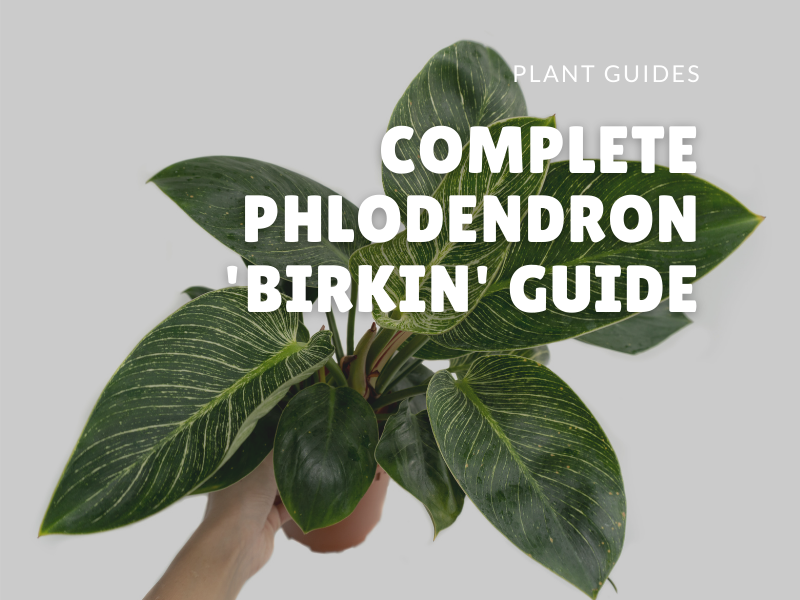We’ve been growing a few pots of Philodendron Birkin for more than a year at the time of writing this post. This page is dedicated to documenting everything we know about growing this beautiful plant.
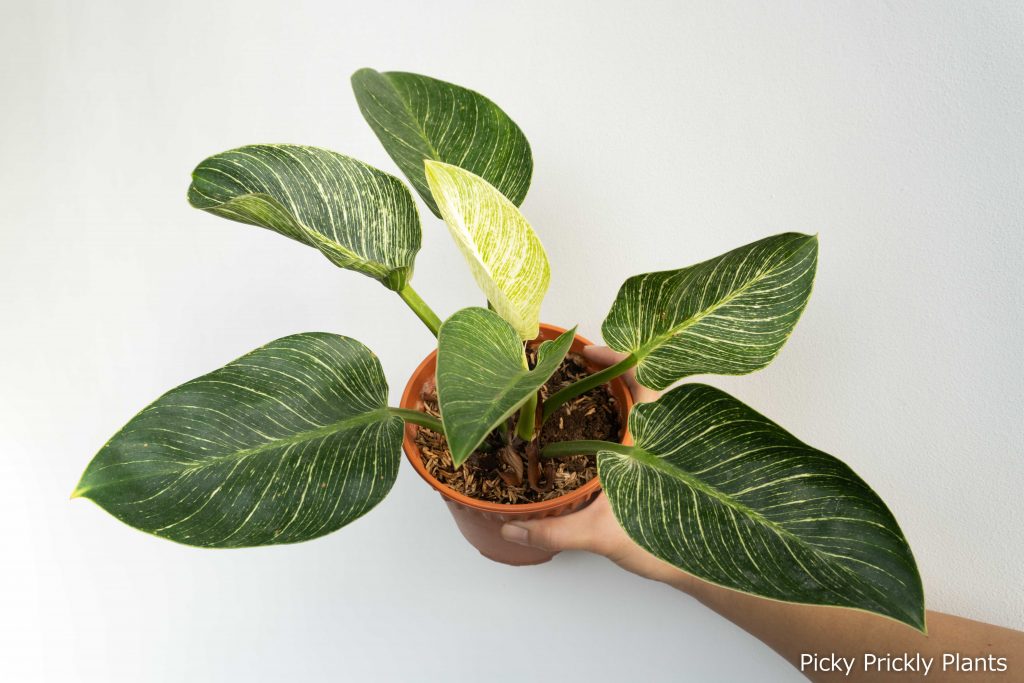
Origins of the Philodendron Birkin
The Philodendron Birkin is believed to be a mutation from a hybrid between a Philodendron ‘Rojo Congo’ and a Philodendron ‘Green Imperial’. We do have a Green Imperial in our collection and can definitely see the resemblance in the way it grows. Being a mutation means that the plant characteristics are not stable and it might look different as it grows.
Philodendron Birkins grow upright without support
Philodendron Birkin is not a crawling nor climbing plant and it grows upright without a need to support it. Instead of always growing from the apex, this plant often sends out offshoots. These offshoots root easily and they are the main method to propagate Philodendron Birkin.
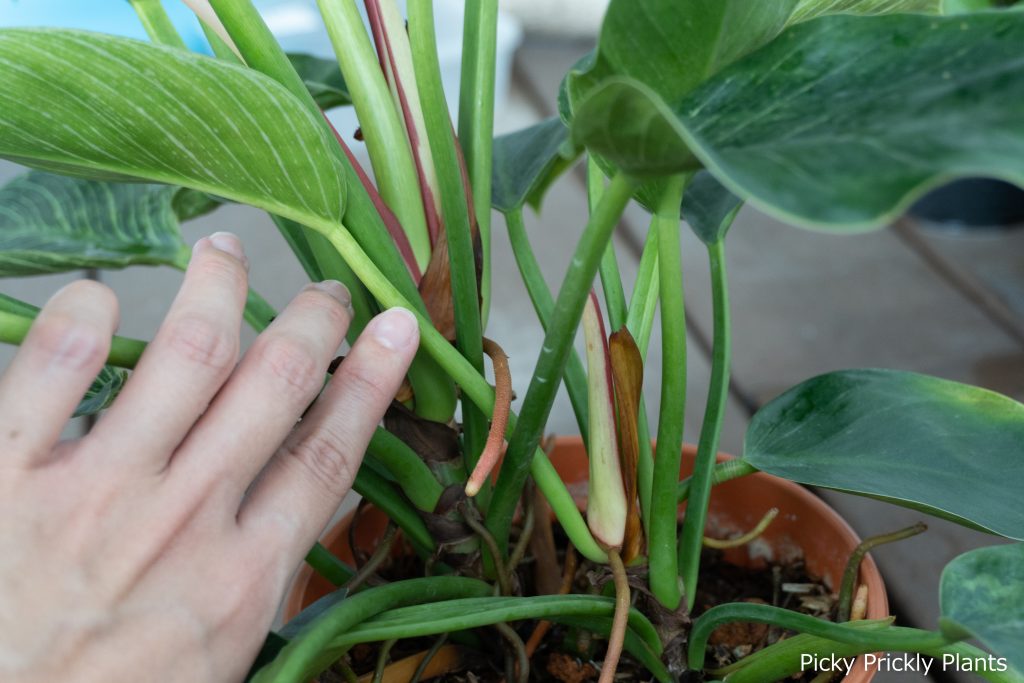
Philodendrons are toxic to cats and dog
Philodendron leaves contain calcium oxalate which can irritate pets when ingested. It causes discomfort, stomachaches and drooling. Although most resources we reviewed mentioned that they are not fatal to pets, special attention needs to be given to young kittens and puppies. If symptoms persist, it is better to contact a vet to confirm. Find out more about what you can do to if you want you pets and plants to co-exist.
Caring for a Philodendron Birkin
Philodendron Birkin is not a fussy plant to keep alive. It is a great plant to keep in both indoor or outdoor environments. However, there are still some basic care tips that you will need to know in order to keep the plant healthy and leaves pristine from spots.
Philodendron Birkin grows well in moderate to bright light
The plant is able to tolerate bright shade but we find that it grows better when it is exposed to the sun for short periods of the day. In our experience, the more sun we provide it, the clearer the variegations are on new leaves. We have seen them grown behind a window with occasional sun and they look great.
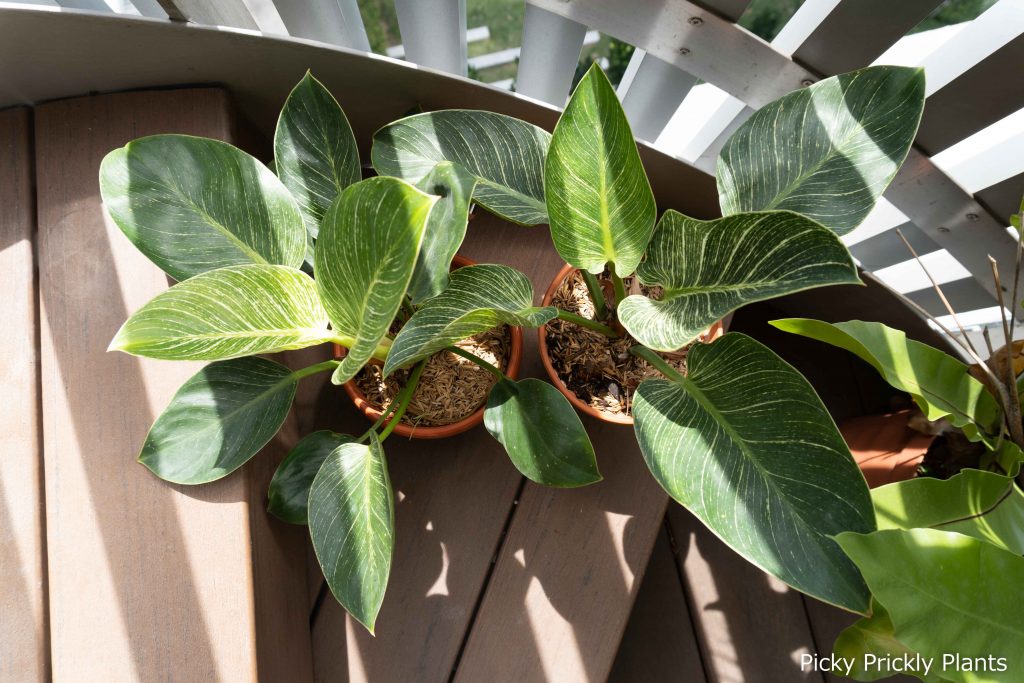
Use a well-draining soil mix
Our recommended soil mix for Philodendron Birkin consists of mainly coconut chips, peat moss, perlite and unburnt rice husks. We grow them outdoors in a windy area and if you are growing indoors, you might need to tune your mix to add more coconut chips or rice husks to improve the drainage. Read more about the basics of soil mixtures.
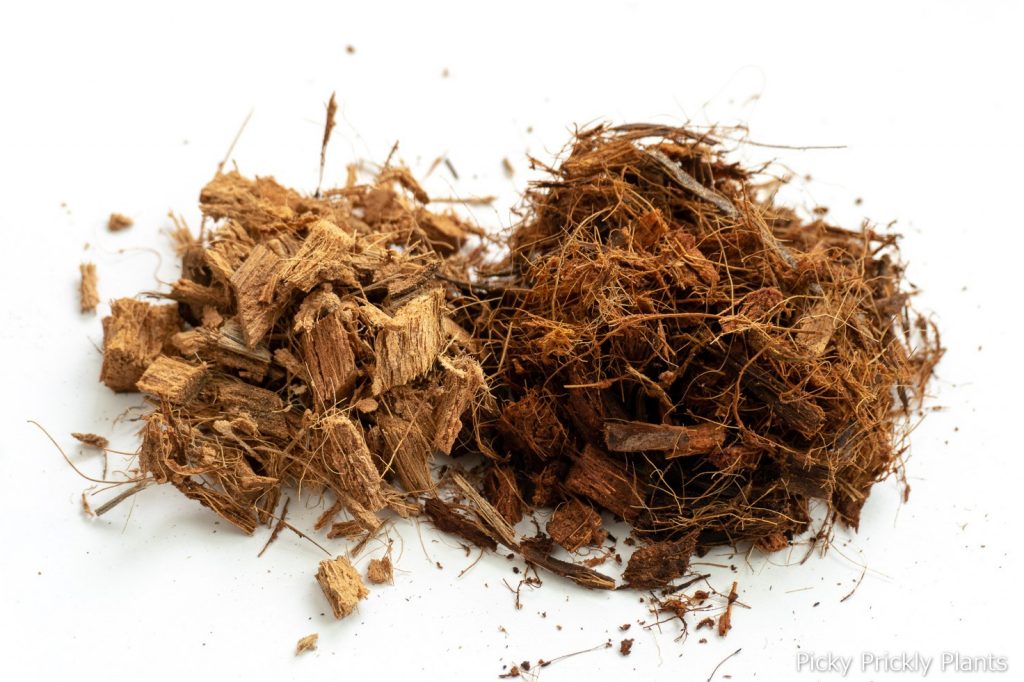
Let the soil dry out between watering
Watering frequency depends on how dry your environment is. The golden rule is always let the top inches of your soil dry out between watering. The Philodendron Birkin can tolerate a day or two of dryness so it is always better to hold off the water if you are unsure. When watering, make sure you evenly and completely drench the media. Always use a pot with drainage holes and make sure the water does not pool in your pot saucers.
Fertilize weekly when the plant is growing
Philodendron Birkin grows at a moderate rate and can take weekly feeding with diluted balanced fertilizer. In our tropical climate, they pretty much grow all year round. In temperate climates, only fertilize when you see that the plant is actively growing new leaves. Overfertilization might cause salt built-up in the media and lead to leaf discolouration and stunted growth.
Foliar sprays with diluted fertilizer work well when your plant is large as nutrients might not move readily from the roots to the leaves. However, they might leave some superficial stains on your leaves that you will need to wash off to keep them looking good.
Propagating Philodendron Birkin
The Philodendron Birkin is an easy plant to propagate. We have currently three healthy pots after growing from our initial purchase more than a year ago.
They are propagated mainly by splitting offshoots
As the plant matures, it will start growing offshoots from the main stem. The offshoots will grow roots and that is when you can try to propagate them. Read more for details on how to propagate Philodendron Birkin.
Seed propagation is not common
Philodendron Birkins cannot be self-pollinated as the male and female parts of the flower mature separately. Our Birkin has only flowered once and we didn’t manage to pollinate it successfully. However, since it is a mutant from a hybrid, we do not have many expectations that the seedgrown off-springs will look the same. It is much better to propagate through cuttings to maintain the genetics of this unique plant.
Common problems growing Philodendron Birkin
Although we mentioned previously that the Philodendron Birkin is not a fussy plant to take care of, it does get a bunch of common problems that affects its looks.
Brown spots or patches on leaves
Brown spots on leaves are a common problem for Philodendron Birkin. Depending on how the brown spots look, they can mean many different problems such as overwatering, sunburn or fungal infections. We dedicated an entire post to go really in-depth into identifying each of these problems and how to fix them.
Most of the time, the brown spots will not kill the plant when treated but they most certainly will not heal and will result in permanent scars. Do make sure to read the post above to prevent them from happening in the first place.
Yellowing leaves
It’s normal for old leaves on the Philodendron Birkin to turn yellow. It is how the plant save energy to focus on grow fresh leaves. However, if you see that a bunch of leaves turning yellow at the same time, you might want to unpot and check the roots for pests or root rot. Always cut yellowing leaves to help the plant get rid of them. This helps to reduce chance of attracting fungal infections as well.
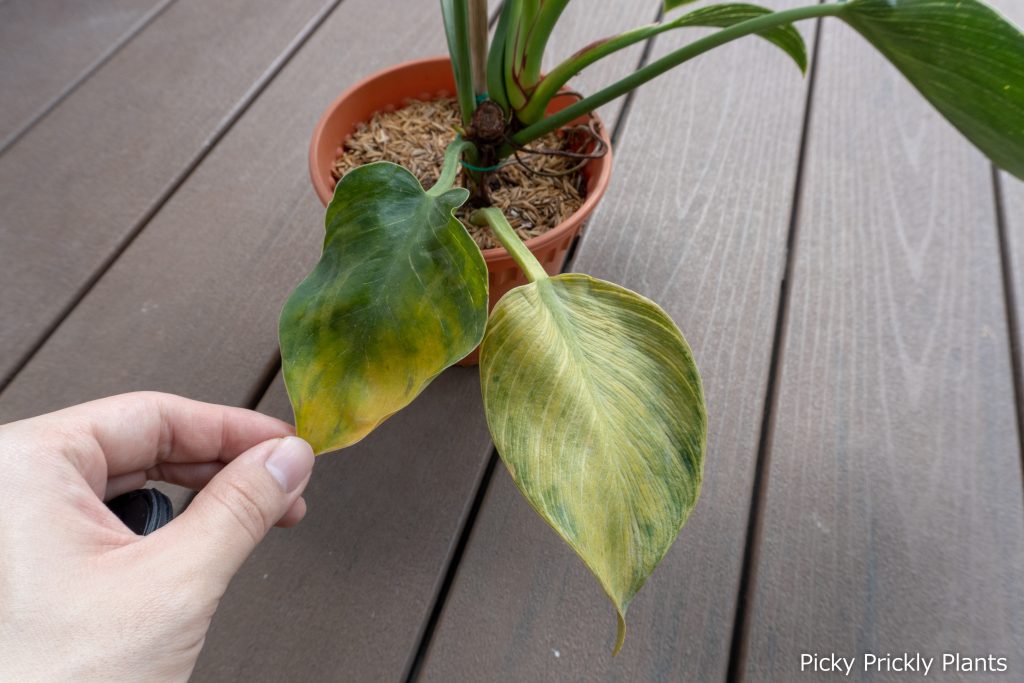
Leaves losing variegation and turning green
Philodendron Birkin does not have a stable mutation. The leaves could revert back to their natural green form and lose their iconic white stripes. This is natural and also temporary most of the time. From our experience, exposing it to more sun does help to bring back the variegated white stripes on new leaves.
Root problems
Root problems can be inferred from looking at the overall health of your Philodendron Birkin. If the plant is not growing during the warm season or leaves start to turn yellow or even mushy, most likely it is something to do with the roots. If your media is too moisture retaining, overwatering the plant can cause root rot. It is best to unpot your Birkin to do a quick check on the root health. Healthy roots should look white or slightly pinkish. If they are black, you might need to make your media more draining and reduce your watering frequency.
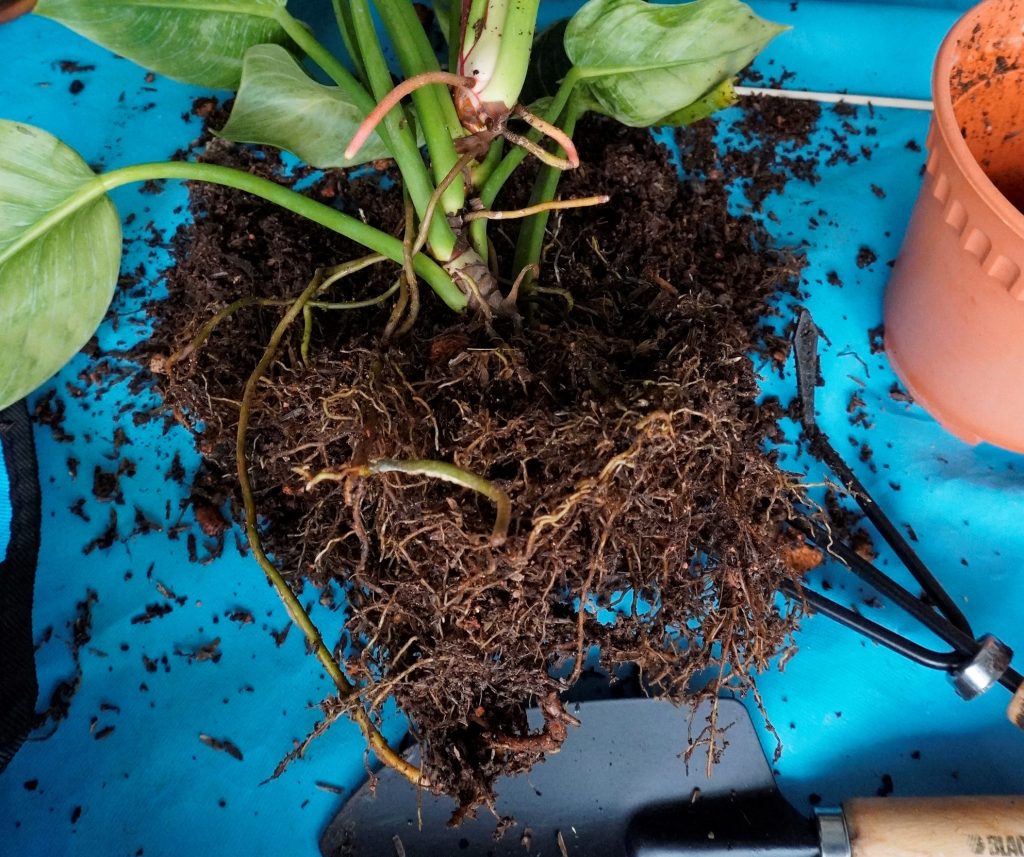
Common pests to look out for
Spidermites, thrips, whiteflies and mealybugs
We have not had huge issues with pests on our Philodendron Birkin. There are occasional spider mites and thrips but they are easy to deal with. Symptoms of pest infestation are:
- Leaves having many little dots that make the plant look dull
- A web-like substance found especially on the tips of young leaves
- Plant stops growing even though it is the growing season
We usually use a wet napkin to wipe down both sides of the leaves. Sometimes we also use pesticide just to be sure.
Root mealybugs and aphids
Bugs that feed on the roots of your Philodendron Birkin are harder to discover and treat. If your plant looks unhealthy and stops growing, it might be good to unpot and check on the roots. If you spot bugs on the roots, you will need to trim away the roots and do a thorough washing under running water.
After using a Dinotefuran based pesticide, we haven’t seen many instances of root pests. We highly recommend it for your ornamental plants.
Should I buy a Philodendron Birkin?
Given that the plant is not too difficult to maintain, we definitely recommend getting it. That being said, this is only if you are able to find one in your local garden centre or plant nursery at an affordable price (Under $20 for a well established plant). Philodendron Birkin has become a really hot plant in recent years and it might be hard to find one that has really nice variegation.
If you already own one, we would like some tips on how you are taking care of your Birkin and photos of your plant in the comments section below.
Hope you enjoyed this and see you again next time.
Frequently Asked Questions
Well, it depends on what you mean by fast. From our experience, our young cuttings grow a new leaf every three weeks or so. The number of leaves it can maintain is dependent on how established the root system is and how much nutrients it is getting.
Are Philodendron Birkins toxic to cats and dogs?
Yes when ingested. Their leaves contain chemicals that irritate the digestive tract of pets and it is best to keep them away from your Philodendrons.
Why is my Philodendon Birkin losing its white stripes?
Because Philodendron Birkin is a mutated variant, it is unstable and could revert back to its original form with full green leaves. What we found out is that giving it a good amount of sunlight helps to maintain the white stripes on the leaves.
Is Philodendron Birkin hard to grow?
From our experience, we found them easy to maintain and they are not picky with their environment. However, you will still need to know some basics tip to care for tropical indoor plants.

